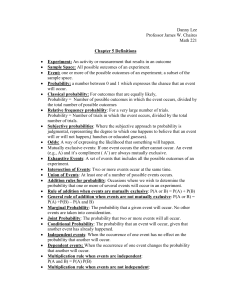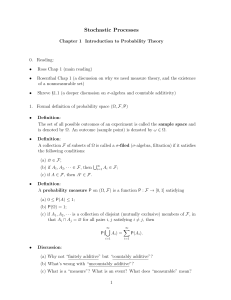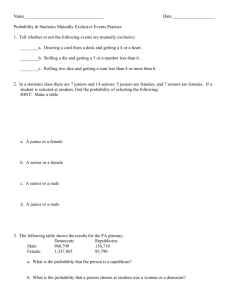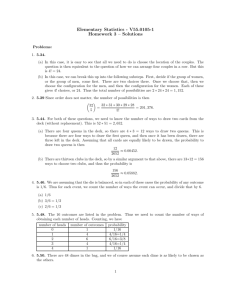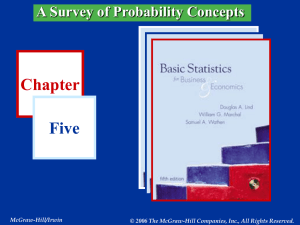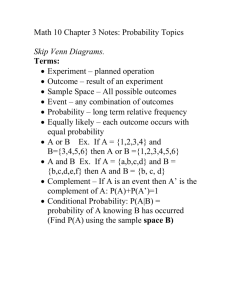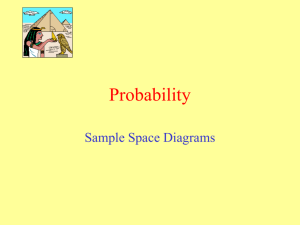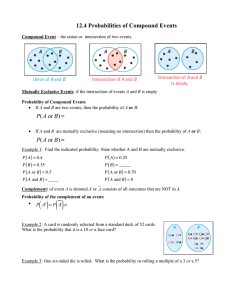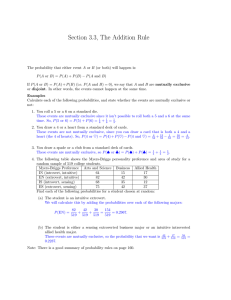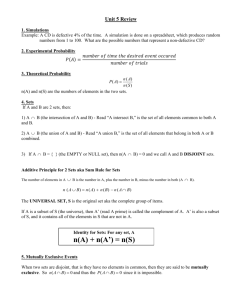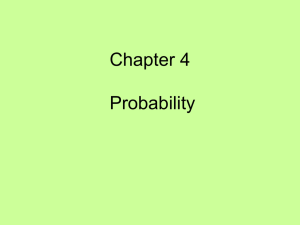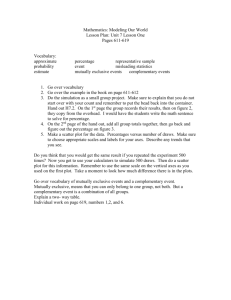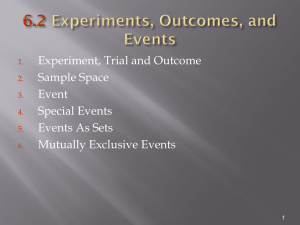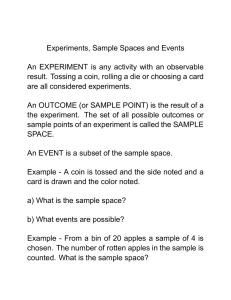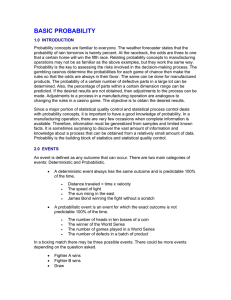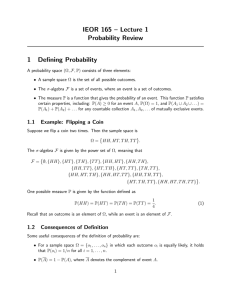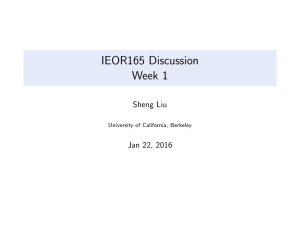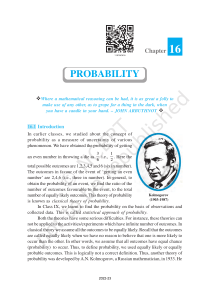Probability.xlsx
advertisement
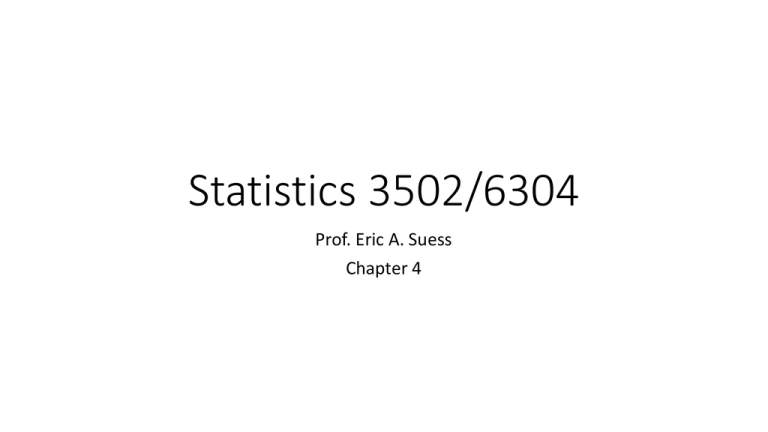
Statistics 3502/6304 Prof. Eric A. Suess Chapter 4 Introduction to Probability • A measure of uncertainty. • Examples: • Screening Tests – Pregnancy, Illegal Drugs, Sports Drug Tests • Quality Control, Reliability, Six Sigma • ESP • Probability is the tool used to make inferences in Statistics What does random mean? • That was so random? • This statement is past tense. • An event is random before is happens. An outcome is random when there are probabilities of the outcomes. • Once the event has taken place it is no longer random. We can talk about an outcome being likely or unlikely for a probability model. Interpretations of Probability • Classical Interpretation of Probability • Based on counting • Developed with games of chance. • Flip a coin • Draw a card from a shuffled deck of cards • Blackjack, roulette, etc. Interpretations of Probability • Relative Frequency Interpretation of Probability • Preform and experiment a large number of times and compute the relative frequency of the event. • Simulation • Observing a production process Interpretations of Probability • Subjective Interpretation of Probability • A one-time statement of the likelihood of an event occurring • Weather prediction for tomorrow. Finding Probabilities • Using counting. • Example: Flip a fair coin twice, what is the probability of HH? Of HT? • Example: Draw a card from a shuffled deck of cards, what is the probability of getting a Red card? Getting the King of Harts? Events and Probability Rules • The probability of an event A is between 0 and 1. • The event A or B • Two events are mutually exclusive if the occurrence of one event excludes the possibility of the occurrence of the other event. • Additive Rule for Mutually Exclusive Events: If two events, A and B, are mutually exclusive, the probability of either event occurring is the sum of the probability of each event. Events and Probability Rules • The complement of an event A is the event that A does not occur. The complete of event A is 𝐴. • The union of two events A and B is the set of all outcomes that are included in either A or B (or both). 𝐴 𝐵 • The intersection of two events A and B is the set of all outcomes that are included in both A and B. 𝐴 𝐵 • Additive Rule: Consider two event A and B, the probability of the union of A and B is 𝑃(𝐴 𝐵) = 𝑃 𝐴 + 𝑃 𝐵 − 𝑃(𝐴 𝐵) Events and Probability Rules • Conditional Probability: When a probability is computed knowing the occurrence of another event. • See Table 4.2 • Unconditional Probability: When a probability is computed overall. • See Table 4.2 Events and Probability Rules • The conditional probability of A given B is 𝑃(𝐴 𝐵) 𝑃 𝐴𝐵 = 𝑃(𝐵) Events and Probability Rules • The probability of the intersection of two events A and B is 𝑃(𝐴 𝐵) = 𝑃 𝐴 𝑃(𝐵|𝐴) 𝑃(𝐴 𝐵) = 𝑃 𝐵 𝑃(𝐴|𝐵) • Independent events: 𝑃 𝐴 𝐵 = 𝑃 𝐴 • Dependent events: 𝑃 𝐴 𝐵 ≠ 𝑃 𝐴 • Multiplication Rule for Independent events: If A and B are independent, the 𝑃(𝐴 𝐵) = 𝑃 𝐴 𝑃(𝐵) Events and Probability Rules • Bayes’ Rule • False Positive • False Negative • Sensitivity • Specificity • Prevalence, prior probability • Posterior probability • Example 4.3 and 4.4
